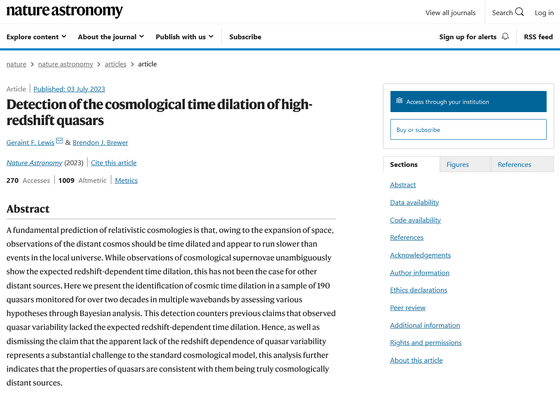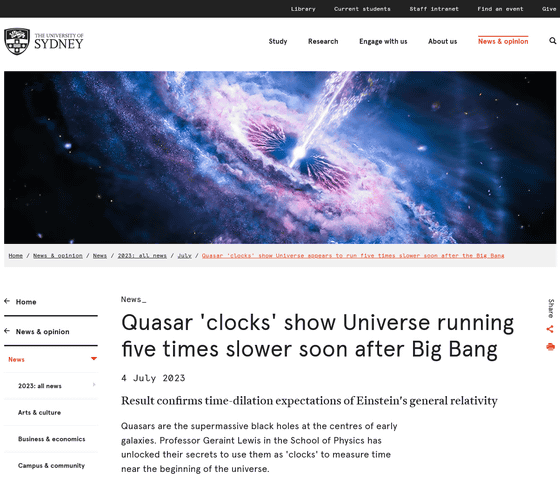The flow of time in the early universe about 1 billion years after the Big Bang was in an extreme slow motion state

Research using massive black hole
Detection of the cosmological time dilation of high-redshift quasars | Nature Astronomy
https://doi.org/10.1038/s41550-023-02029-2

Quasar 'clocks' show Universe appears to run five times slower soon after the Big Bang - The University of Sydney

Time Dilation-YouTube
Einstein's theory of general relativity implied that the distant, or ancient, universe was moving much slower than it does now, but it's actually difficult to look back in time.
This time, Professor Geraint Lewis of the University of Sydney and Professor Brendon Brewer of the University of Auckland investigated the details of observation data of 190 quasars over 20 years. By combining observations obtained at different colors and wavelengths, they standardized the 'ticking' of each quasar, creating what could be called a 'quasar clock'.
Based on the data of the 'Quasar Clock', the flow of time in the early universe from just after the Big Bang to about 1 billion years later was much slower than today.
In the past, astronomers used supernovae as 'standard clocks' to speculate that the early universe, when time flowed slowly, dates back to about half the age of the universe. It's more in-depth content.
“Supernovae behave like single flashes of light, making them easy to study, but quasars are as complicated as fireworks displays in action,” Lewis said. We have shown that it can be used as a standard time index for the universe.'
In addition, based on previous research that could not identify the time dilation of distant quasars, Professor Lewis said, ``Previous research has led people to wonder whether quasars are really cosmological objects, and whether the idea that the universe is expanding. But with this data and analysis, we find the elusive 'marks' of quasars, and quasars as predicted by Einstein in his theory of general relativity. I found that it works for
Related Posts:







